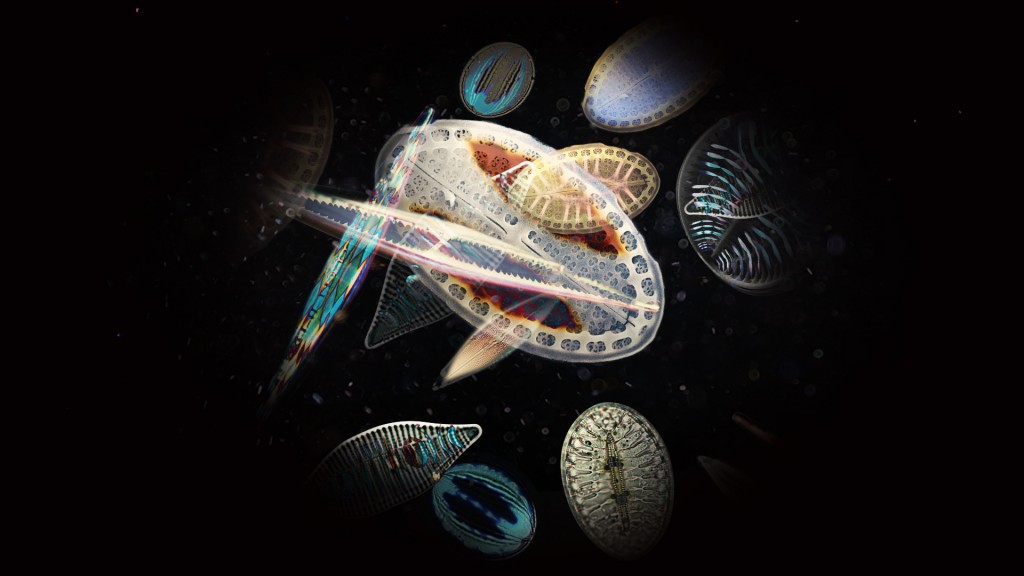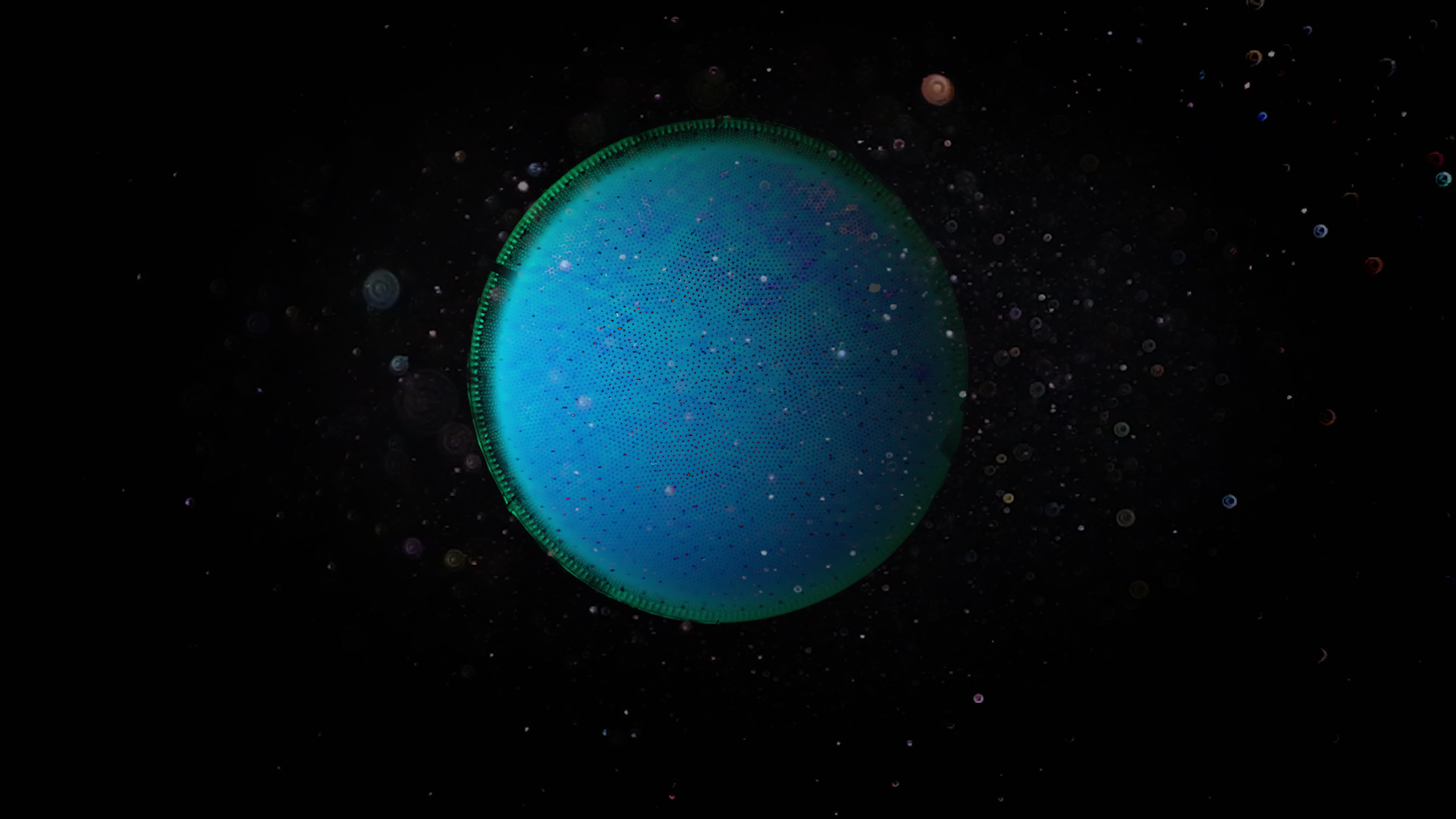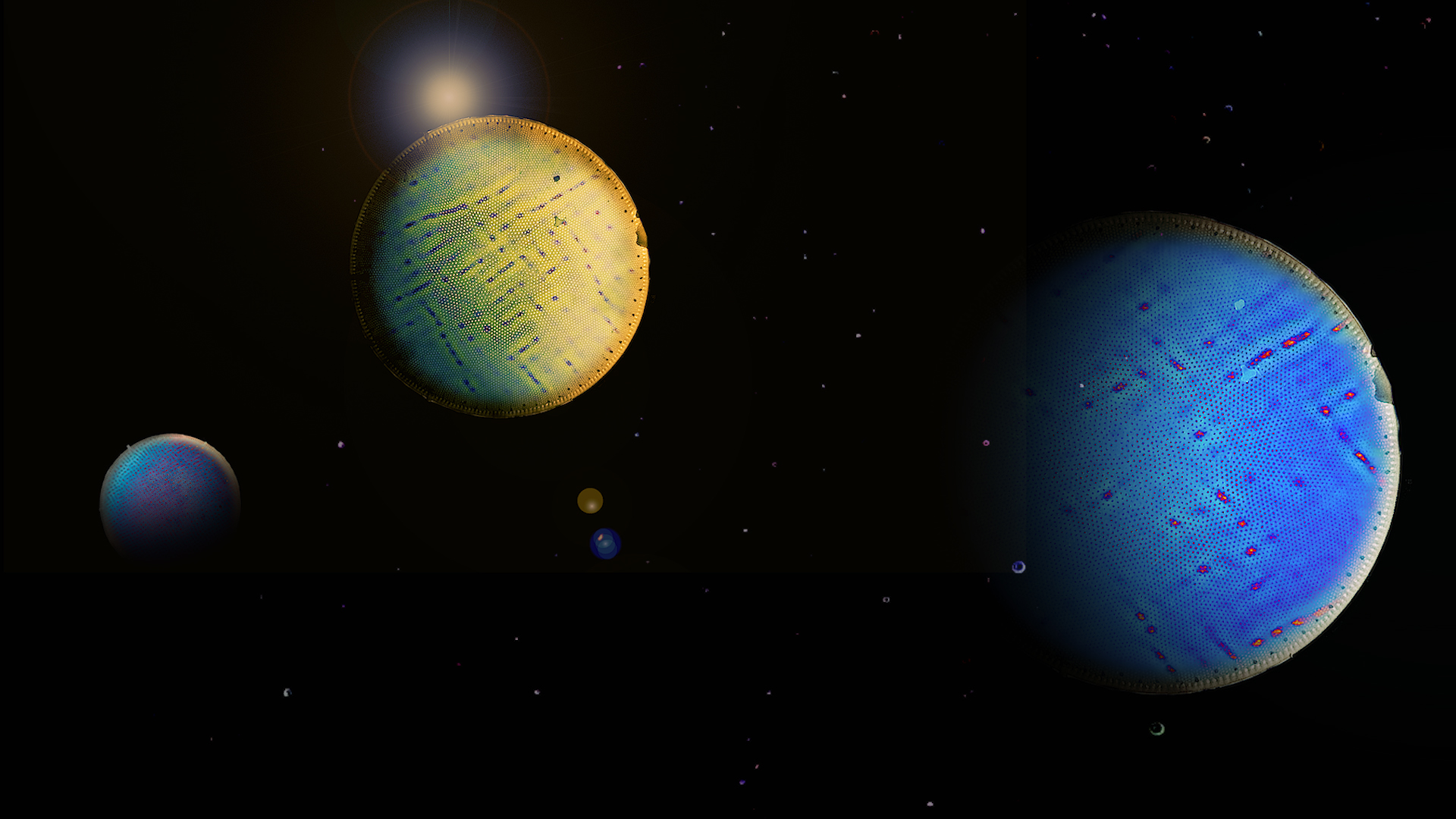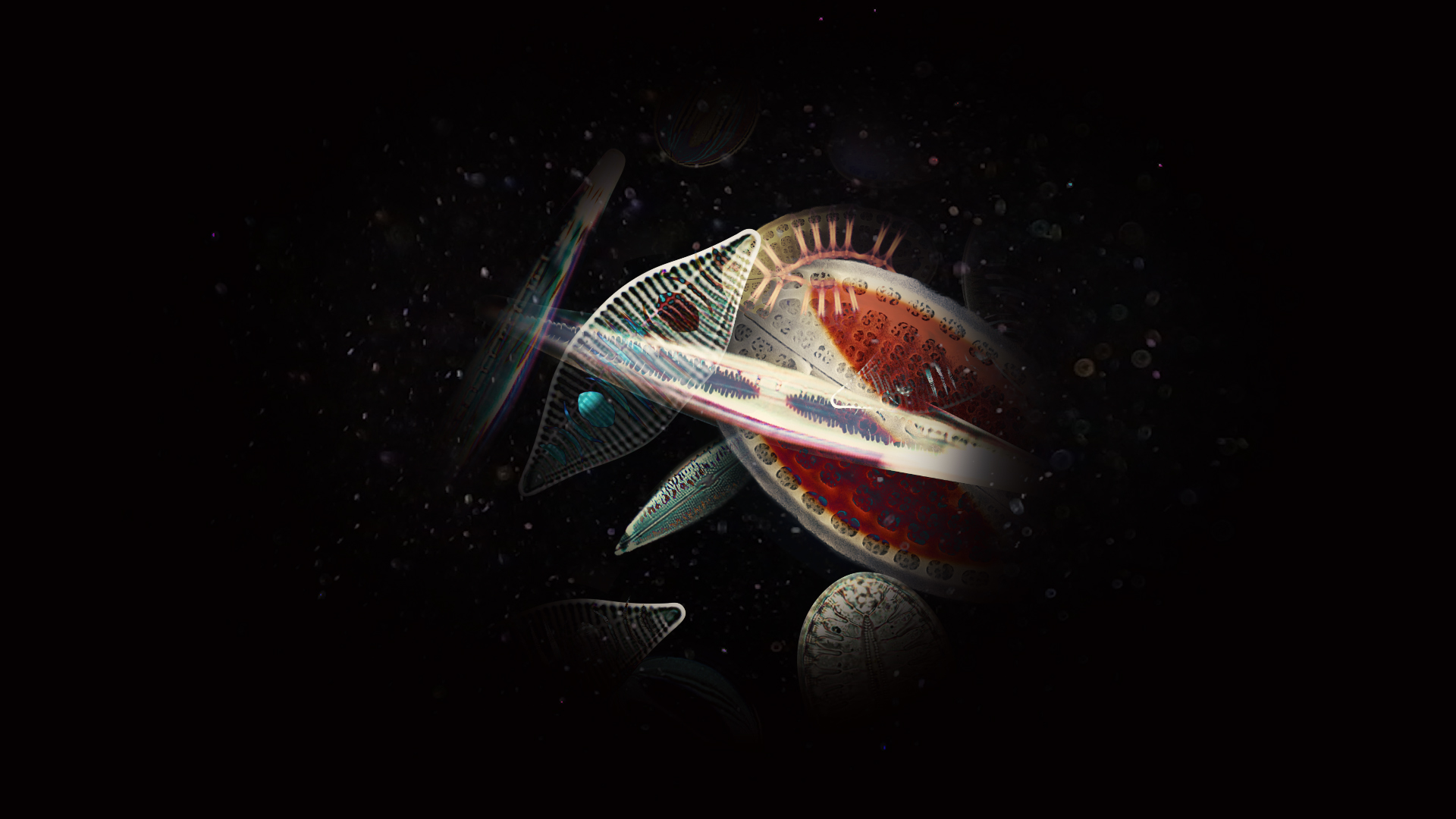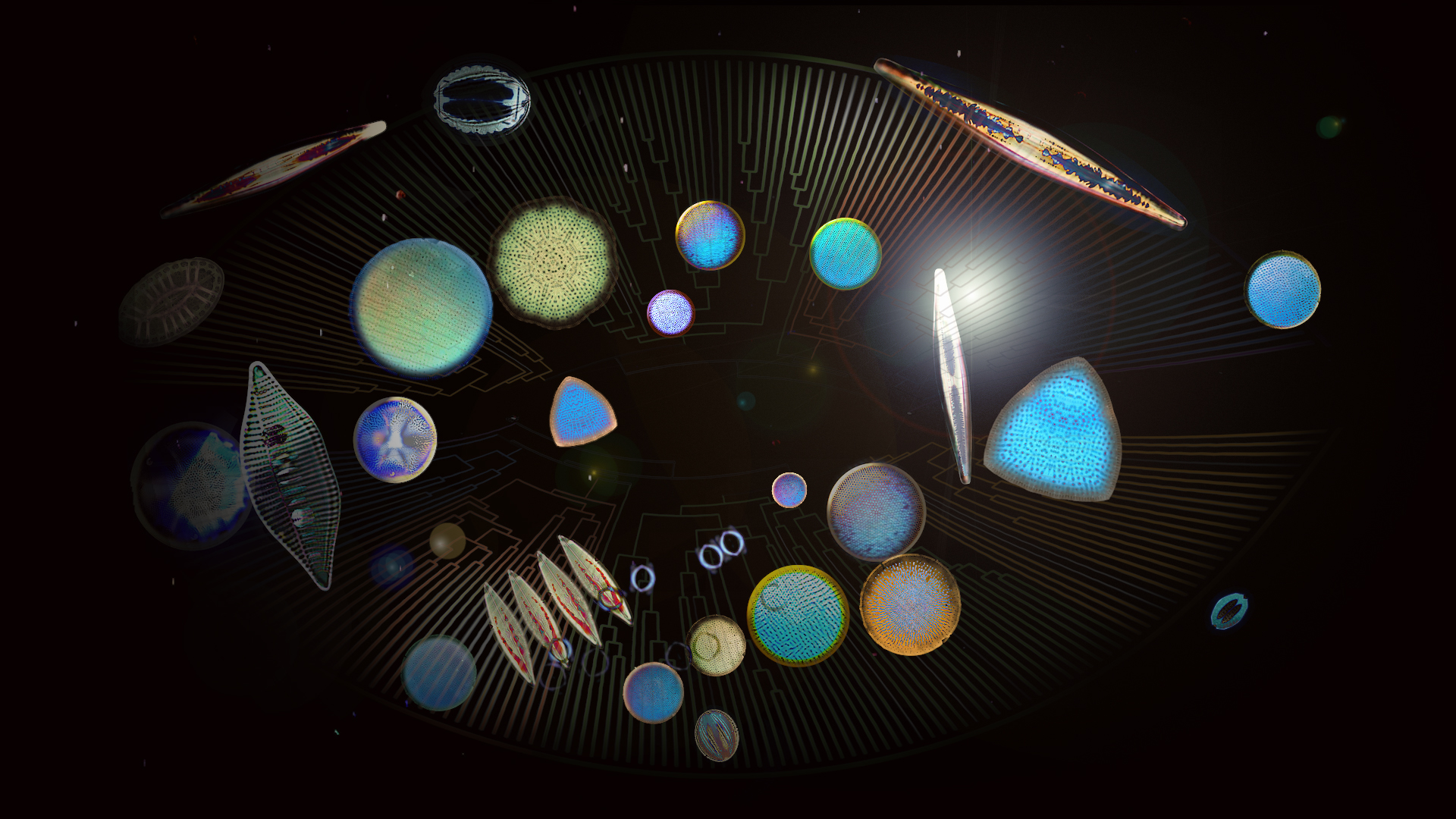Glasshouse Deep
single channel video with sound, duration 14 minutes 21 seconds 2021
Glasshouse Deep is a journey into the minute world of the strange deep, where the very small assumes a planetary scale. Reflective, refractive, luminous, each organic/entity(s) temporal evolution is layered with the motion of a trajectory through points in space. Speculative migrations both vertical and horizontal follow orbits that telescope inwards and outwards.
The organics that populate the Glasshouse Deep claim ancestry from plants but of the minute kind, single-celled algae – diatoms. Like plants they turn sunlight into chemical energy through photosynthesis, but unlike plants diatoms also mysteriously possess a urea cycle, a feature that they share with animals. This incredible hybridity has been attributed to the incorporation of genes from their ancestors and by horizontal gene transfer from marine bacteria. Extraordinary in their diversity of form, planktonic, adnate and stalked, diatoms are chimeras with glass exoskeletons, exhibiting the most intricate bilateral and radial symmetry. A symmetry that is seen is other equally unexpected spaces as well. In the digital domain, video feedback demonstrates that some systems have the ability to spontaneously organize themselves into increasingly complex structures.
Glasshouse Deep is the latest in a suite of works that employ video-feedback to explore processes of growth and evolution through a technological matrix. The work aims to discover and extend the underlying laws and processes, arising from fundamental physics and chemistry, which govern growth and form in biological systems and it’s mirroring in the digital sphere.
- Glasshouse Deep, Still frame, 2021
- Glasshouse Deep, Still frame, 2021
- Glasshouse Deep, Still frame, 2021
- Glasshouse Deep, Still frame, 2021
Light is a central protagonist. The intensity and spectral quality of light induces migration and behavioral photo protection in diatoms . Video feedback occurs when a loop is created between a video camera and a television screen or monitor. This dynamic recursive flow of light between camera and monitor generates startling and beautiful forms. Disks of expanding and contracting light reveal oscillating points/dots, gradually dislocating radiating pinwheels and star bursts exhibit complex patterns and colour, flowing outward from the center, demonstrating that at every higher level of complexity, there is greater potential for new structure and change.
The work combines images and research of diatom specimens sampled at different times of the year and during different seasons by scientists Minji Lee and Sanjoon Park from the KIOST. These images form the base upon which layers of video-feedback build intricate and delicate forms that explore the structural coloration of diatoms that gives them their other names ‘jewels of the sea’ or ‘living opals’.
As much as light, sound is a central part of the work. Building on the iconic and deeply moving “Venus, The Bringer of Peace”, from “The Planets” (Op. 32) orchestral suite composed by Gustav Holst in 1914-1916 , the sound feeds back on its self, mirroring the depth and thickness of water, simultaneously drawing us upwards and outwards.
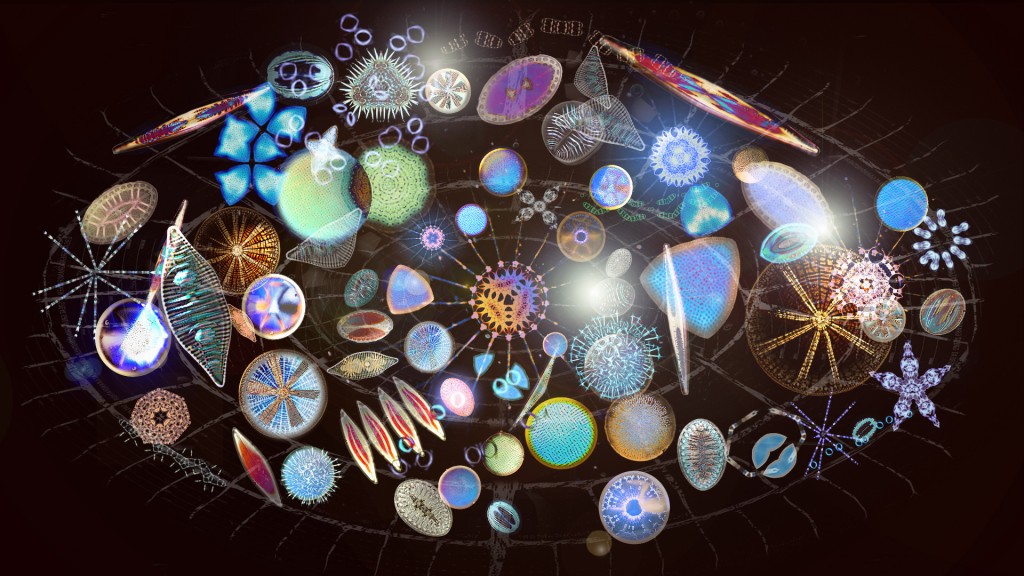
Glasshouse Deep was Commissioned by the Busan Biennale Organizing Committee, 2021
(Diatom Specimens collected and photographed by Minji Lee and Joonsang Park, Korea Institute of Ocean Science and Technology KIOST)
- Glasshouse Deep, installation view, Sea Art Festival, image credit Park Hongsoon
- Glasshouse Deep, installation view, Sea Art Festival, image credit Park Hongsoon
